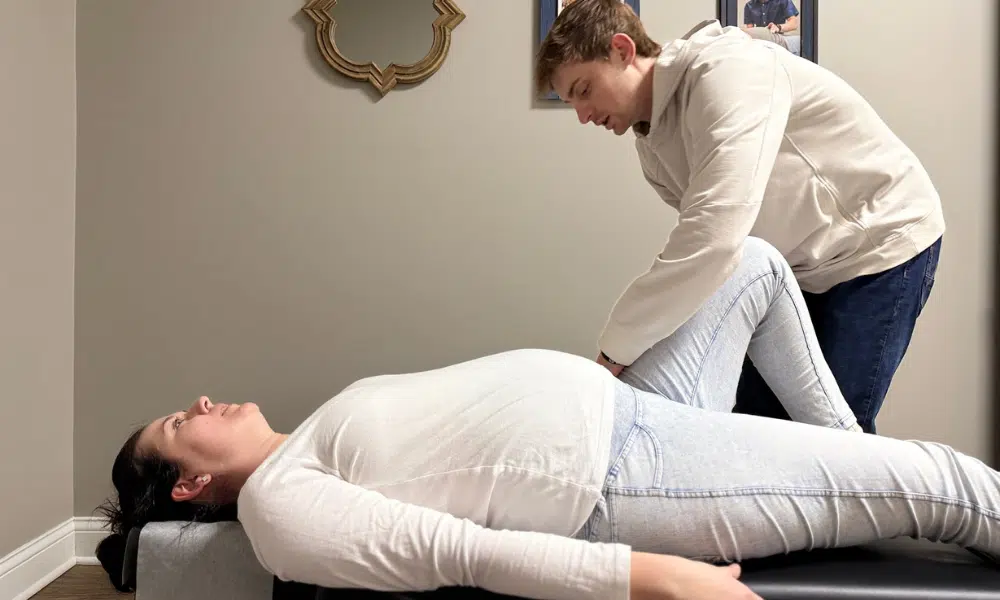Living with Sensory Processing Disorder symptoms can make simple everyday activities challenging for children. Even minor things, such as the sound of the garbage truck or the feel of a new shirt, can cause extreme reactions in some children with Sensory Processing Disorder (SPD). This can lead to them avoiding normal childhood activities and seeking isolation in their room away from unpredictable stimuli that might trigger them.
Parents often feel overwhelmed and ashamed when they don’t understand their child’s extreme reactions. Pediatricians may tell them not to worry, as their child will likely outgrow their sensory problems. However, for many children with Sensory Integration Disorders (SID), their struggles persist year after year, taking a heavy toll on them and their families.
Sensory processing disorder affects at least 1 in every 20 kids daily, disrupting how their brain processes and responds to sensory input. Ordinary sights, textures, sounds, or other stimuli can become confusing and lead to distressed reactions.
Despite the prevalence and life-limiting impacts of SPD, lack of awareness means too many children like Andy do not receive the support they desperately need during pivotal developmental windows.
This article will help parents recognize possible sensory processing disorder symptoms and provide helpful solutions to improve their child’s quality of life, starting with key clarification.
What is Sensory Processing Disorder?
Sensory Processing Disorder (SPD) is a condition in which children and adults have difficulty receiving, interpreting, and responding to sensory information from their environment and body correctly. Sensory information comes through our senses, such as sight, smell, sound, taste, touch, balance, body awareness, and position.
Children often display distressed reactions and struggle to interact smoothly when the brain cannot efficiently process and respond to sensory input. SPD can affect different sensory systems, including the auditory, visual, tactile (touch), oral, olfactory (smell), vestibular (balance and movement), and proprioceptive (awareness of body in space) systems.
Reactions tend to fall into two categories – hypersensitivity or hyposensitivity:
- Hypersensitivity: Overly intense reactions to certain stimuli, finds sensations painful or intolerable
- Hyposensitivity: Underreactive, fails to respond to regular sensory input
SPD is a condition that is closely related to subluxation and dysautonomia, which are concepts that are integral to chiropractic approaches. Subluxation refers to accumulated tension, misalignment, and neurological dysfunction, especially in the upper neck and cranial areas.
Dysautonomia, however, is an imbalance between the sympathetic and parasympathetic nervous systems. To soothe sensory storms, it is important to correct subluxation patterns and gently rebalance the central nervous system. Before we delve into that, let’s first understand how to recognize the signs of sensory processing disorder.
Recognizing Sensory Processing Disorder Symptoms and Behaviors
Sensory Processing Disorder (SPD) symptoms can vary widely in type and severity across children but generally fall into patterns of hypersensitivity or hyposensitivity within one or multiple senses.
Signs of Hypersensitivity
- Being overwhelmed by noises like vacuum cleaners, blenders, and hair dryers.
- Being bothered by loud, sudden sounds like sirens or honking horns.
- Disliking crowds or noisy environments like malls and playgrounds.
- Frequently covering ears to protect from noise intrusions.
- Excessively being bothered by bright lights and avoiding direct light.
- Flinching or crying when touched unexpectedly.
- Disliking certain food textures and having tantrums at mealtimes.
- Avoiding certain fabrics or clothing types next to the skin.
- Poor balance and coordination, appearing clumsy.
Signs of Hyposensitivity
- Failing to respond when the name is called.
- Not reacting to loud noises.
- Constantly touching people and objects.
- Not respecting physical boundaries.
- Being fascinated with looking at spinning objects for long periods.
- Seeking out deep touch pressure and enjoying tight hugs.
- Having a high pain tolerance and often being unaware of injuries.
- Loving excitement and speed and engaging in risky physical play.
Children can simultaneously have hypersensitivities in some areas alongside hyposensitivities in others, further complicating matters. The degree of sensory processing issues that interfere with daily life activities determines if a child likely has clinically significant SPD.
Sensory Processing and Dysfunction
Proper evaluation is important to detect potential sensory issues and provide appropriate care solutions. Occupational therapy assessments traditionally observe children across various supervised activities to assess their responses to stimuli and environments.
However, it can be difficult to determine whether challenges reflect a disorder or are just normal developmental quirks. For example, while many toddlers go through picky eating phases that eventually resolve, a child who consistently gags or cries with certain textures likely signals bigger issues that interfere with daily functioning.
PX Docs’ INSiGHT Scans provide advanced insights that can take the guesswork out of identifying sensory processing dysfunction. Our state-of-the-art neurological testing can detect the presence of subluxation and dysautonomia underlying these issues.
Although the exact cause of sensory processing disorder is not yet entirely understood, it is believed to be a combination of genetic and environmental factors. Some research indicates that sensory processing challenges may have hereditary links. However, genetics alone cannot explain the increasing prevalence of SPD.
“The Perfect Storm” of Sensory Processing Disorder
The PX Docs “Perfect Storm” framework explains why sensory processing and autism spectrum disorders are on the rise.
The term “Perfect Storm” refers to a series of stressors that build up and disrupt healthy development. This series of stressors usually starts during pregnancy, when the mother’s distress exposes the fetus to excessive stress hormones. Delivery complications and birth trauma can also damage delicate neurological structures.
Subluxation, a misalignment between the upper neck and the cranium, can further impair nervous system communication and regulation.
Children with sensory processing disorder often experience recurrent ear fluid and infections, typically treated with antibiotics. However, the continued use of antibiotics can cause dysautonomia, disrupting immune function and gut microbiome balance. This leads to further neurological and biological stressors that alter nervous system homeostasis, creating sensory dysfunction.
Addressing the root causes of SPD, such as subluxation and realigning communication pathways, can calm the neurological storm.
Far-Reaching Impacts of Living with SPD
Sensory processing dysfunction has a pervasive impact on various areas of development beyond the apparent distress of sensory attacks and meltdowns.
- Learning and Education: Children with SPD often struggle academically and behaviorally because of problematic responses to sounds, lighting, and textures, which interfere with their concentration. They may experience difficulties following instructions, communicating with peers, and conforming to classroom norms.
- Social and Emotional Skills: Sensory overload or insensitive responses can strain social connections and emotional regulation. Children may overreact or seem oblivious during interactions, making building and maintaining friendships challenging. Anxiety, depression, and other disorders may also emerge.
- Speech and Language: Children with sensory challenges often experience delays in receptive and expressive communication, hindering their vocabulary, articulation, and conversational skills. Auditory sensitivity also creates additional barriers.
- Motor Coordination: Sensory and perceptual-motor deficits lead to problems with balance, strength, and controlled movement. Children may experience delays in sitting and crawling and demonstrate clumsiness. Handwriting and tasks requiring fine motor precision may also suffer.
- Sleep and Other Biological Functions: Chronic sensory hyperarousal and dysregulation can also affect sleep quality and duration. Digestion, bowel regularity, and immune function may also be affected, creating comorbidities.
Coping with SPD can be challenging for families, as it can be exhausting to maintain stability for siblings, domestic responsibilities, and parental self-care.
Treatment Strategies for Sensory Regulation
Traditionally, occupational therapy centered on sensory diets, regulated exposure to stimuli through activities, and counseling have been utilized to help children handle sensory dysregulation episodes. These can teach coping techniques but do not solve the underlying neurological imbalance.
The advanced Neurologically-Focused Chiropractic Care through PX Docs leverages advanced technology and protocols that finally address those root causes—subluxation, dysautonomia, and vagus nerve dysfunction. Our doctors perform specialized sensory scans and assessments to generate tailored treatment regimens for each child.
We release stuck stress patterns interfering with nervous system communication by applying gentle adjustments to relax areas manifesting abnormal neural tension and misalignments. Specific techniques stimulate the vagus nerve, activating the parasympathetic system to initiate the calming, restorative state that overburdened sensory networks deeply need.
As the nervous system regains flexibility and sensory noise quiets down, abilities emerge for traditional therapies to gain traction by retraining pathways. Additive improvements help children participate more fully in childhood occupations. Parents describe better sleep, concentration, emotional regulation, sociability, and everyday tolerances.
Progress requires consistent patience and support, but possibilities expand dramatically once these core physiological balances are restored.
Next Steps for Parents of Sensory Kids
Getting specialized care from providers like PX Docs who understand the neurological components early on is crucial for restoring abilities to relate comfortably to the world. To determine suitable options in your area, visit the PX Docs Directory.
Remember, you are not alone in this sensory journey; help is available. Take the first step and find the doctor, the care, and the community you and your family deserve!





